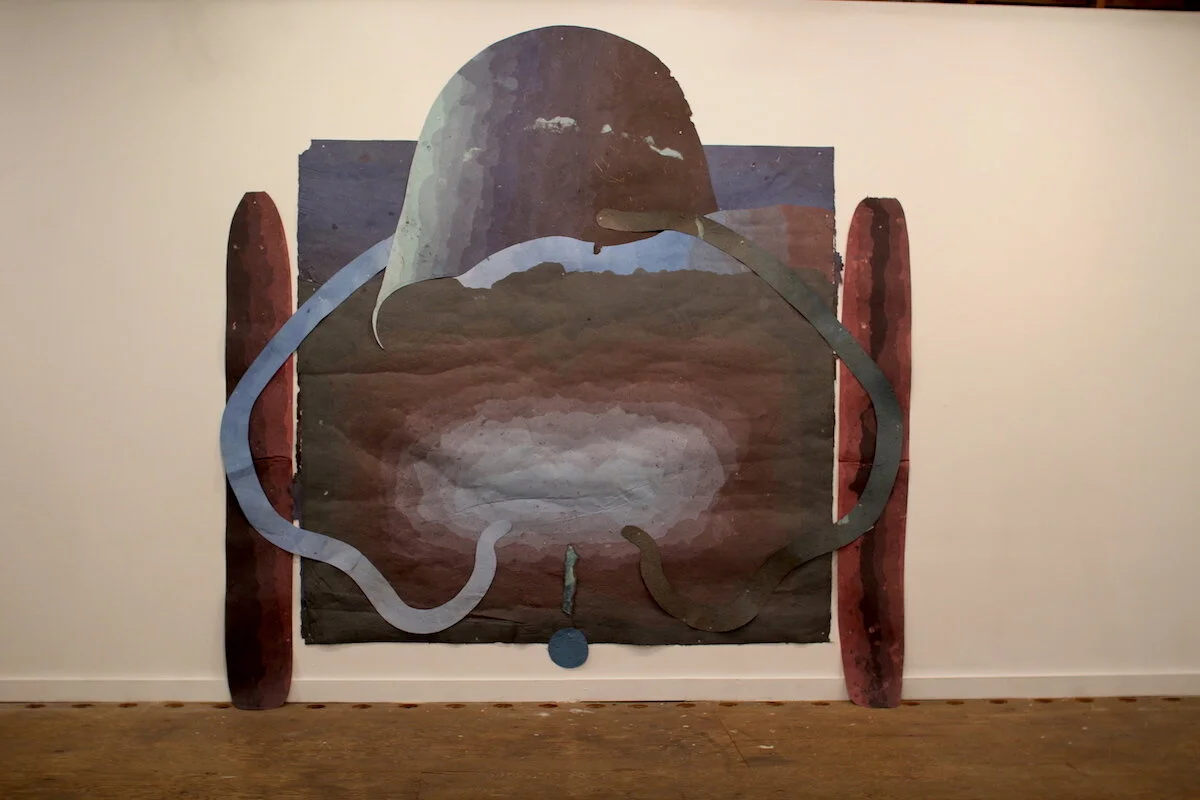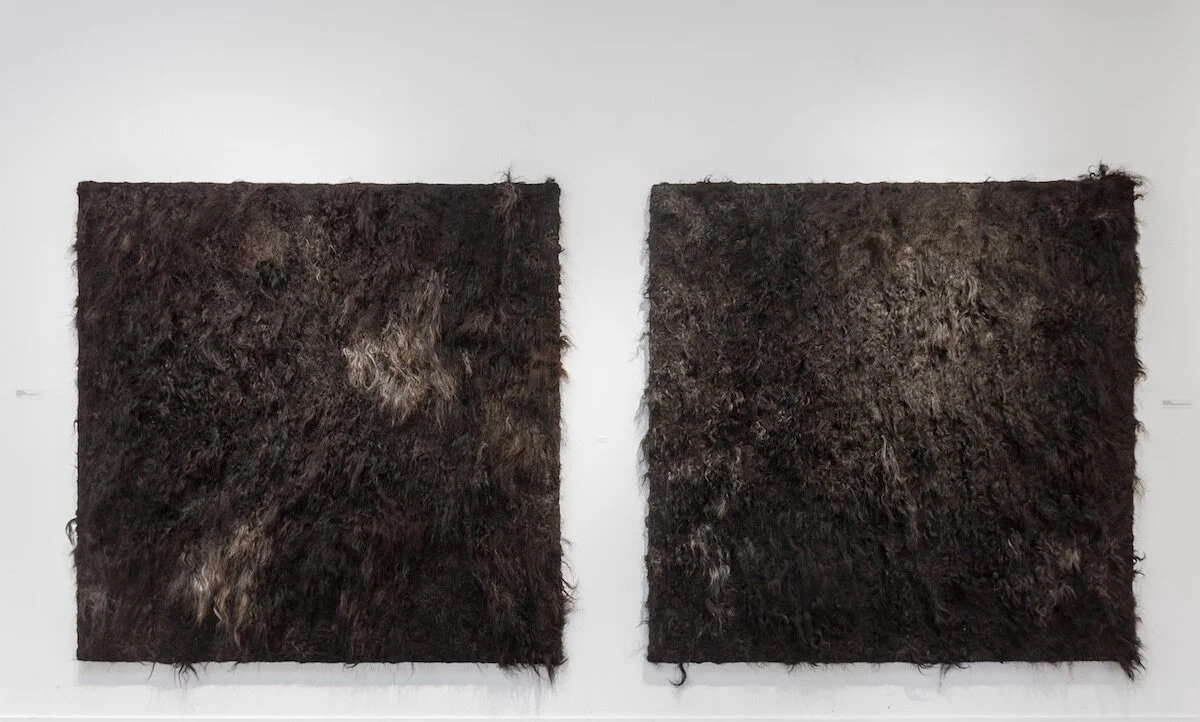The depth and breadth of a group exhibition being held at the RE Institute in Millerton NY belies the received notion that artists must live and work in cramped spaces in cities.. The artists represented are Hong Hong, Brigitta Veradi, Richard Baim, and Peter Fulop.
Hong Hong
Each piece originates as huge sheets of paper, handmade from mulberry bark, treated with ash, and imbued with dyes. The paper is made in the out-of-doors--in a yard or a parking lot-- on a modular mold measuring 12 x 8’. Each sheet takes about one day to make.
These huge sheets of paper, are laid out randomly and shuffled, and may be cut into shapes laid over the larger field. The pieces change with each showing; the paper absorbs humidity, changing size and color, and deteriorates over time. Landscape is not a place in these works, but "intersecting time lines", a way of seeing narrative as a broad vista to navigate. These works could be seen as abstractions, but--- as is the wont of the human brain--shapes and symbols lurk in the paper--maybe snakes, bells, clouds, knives. Or maybe not. The artist states that creation myths inform the work, and are woven into this paper, which has the texture of your grandmother's hands. You must touch it. The artists says that she doesn't think about what she sees when she works, but is searching for a feeling --and when it's found, it's done.
Brigitta Varadi
For the last three year Brigitta Varadi knows Nico and Bart, 2 black sheep who live in Salem NY. Using silk and gauze, she weaves the year's shearings into squares 63 inches on each side, commemorating these lived-lives in pelts, as dark blanket-like hangings, stretched onto wood frames. As a group, these hangings reveal subtle variations from year to year, related to pregnancy, aging, the changing ecology and weather. You want to touch this slow way of marking time with your hands--maybe even your face.
These hangings are a deep black-brown color, flecked though with lighter wool, reminding of the work of artists who challenge us with the subtle variations in pauci-chromatic painted fields. But in Varda's work, time softens, and tenderness overcomes theory.
Peter Fulop
Peter Fulop appears to be in the thrall of a love affair with adobe, and we get to benefit. With clay, daub and straw he shapes a variety of unnecessary objects--which is to say, he makes artworks with adobe. Some of these objects reach toward a formalist horizon--e.g. adobe discs hung like paintings on the wall, and pigmented adobe domes--whereas some have the offhanded beauty of utilitarian objects--hairy bricks made with hay tossed in a loose pile, not quite soil, but entirely human-- lovely and rude.
Richard Baim
Richard Baim's mediums are photography and projection installations. The photographs are conventionally matted and framed, calling-and-responding to the images in the massive projection installations. At the RE Institute exhibit upstairs, his wall-sized projection/installation plays in a paroxysmal way, and downstairs a video version of that installation runs throughout the show on a large television screen. The black and white photographs hanging in the hall gallery downstairs are double-exposed. One of each exposure is in foveal/sharp focus, the other, overlaid, is entirely or partially out of focus. The result is jarring, reminding the mind (not the eyes) of dream"perceptions" or remote memories, more than documented experience.
by Sandra Moore
Hong Hong, Device for Safe Turning, Spell for a Clear Flood
Materials: mulberry bark, repurposed paper, dyes, pollen, dust, water, sun
Nico and Bart

